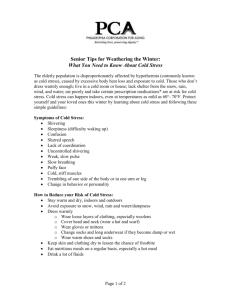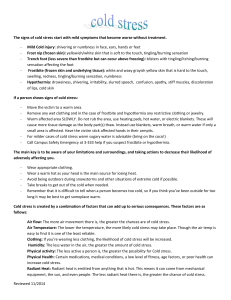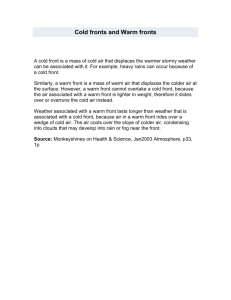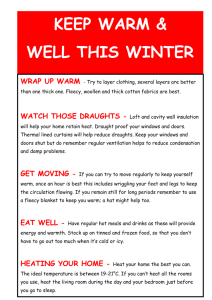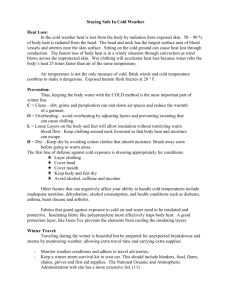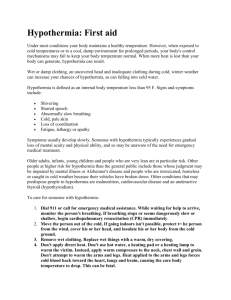Winter Safety How to protect against the cold
advertisement
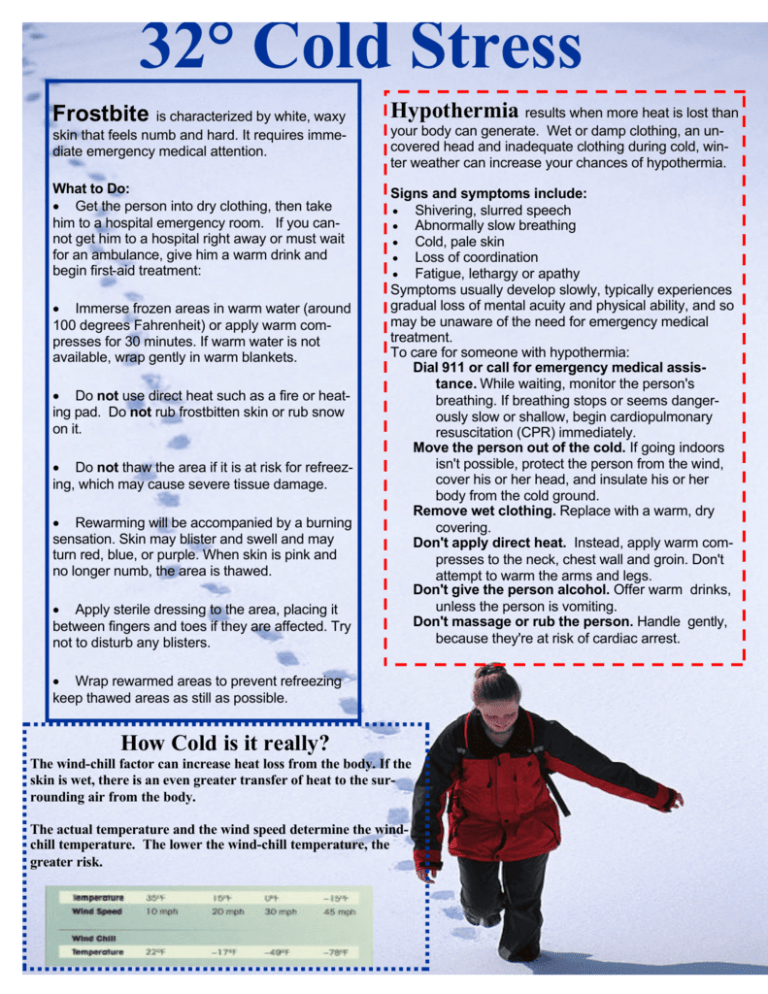
32° Cold Stress Frostbite is characterized by white, waxy Hypothermia results when more heat is lost than skin that feels numb and hard. It requires immediate emergency medical attention. your body can generate. Wet or damp clothing, an uncovered head and inadequate clothing during cold, winter weather can increase your chances of hypothermia. What to Do: • Get the person into dry clothing, then take him to a hospital emergency room. If you cannot get him to a hospital right away or must wait for an ambulance, give him a warm drink and begin first-aid treatment: Signs and symptoms include: • Shivering, slurred speech • Abnormally slow breathing • Cold, pale skin • Loss of coordination • Fatigue, lethargy or apathy Symptoms usually develop slowly, typically experiences gradual loss of mental acuity and physical ability, and so may be unaware of the need for emergency medical treatment. To care for someone with hypothermia: Dial 911 or call for emergency medical assistance. While waiting, monitor the person's breathing. If breathing stops or seems dangerously slow or shallow, begin cardiopulmonary resuscitation (CPR) immediately. Move the person out of the cold. If going indoors isn't possible, protect the person from the wind, cover his or her head, and insulate his or her body from the cold ground. Remove wet clothing. Replace with a warm, dry covering. Don't apply direct heat. Instead, apply warm compresses to the neck, chest wall and groin. Don't attempt to warm the arms and legs. Don't give the person alcohol. Offer warm drinks, unless the person is vomiting. Don't massage or rub the person. Handle gently, because they're at risk of cardiac arrest. • Immerse frozen areas in warm water (around 100 degrees Fahrenheit) or apply warm compresses for 30 minutes. If warm water is not available, wrap gently in warm blankets. • Do not use direct heat such as a fire or heating pad. Do not rub frostbitten skin or rub snow on it. • Do not thaw the area if it is at risk for refreezing, which may cause severe tissue damage. • Rewarming will be accompanied by a burning sensation. Skin may blister and swell and may turn red, blue, or purple. When skin is pink and no longer numb, the area is thawed. • Apply sterile dressing to the area, placing it between fingers and toes if they are affected. Try not to disturb any blisters. • Wrap rewarmed areas to prevent refreezing keep thawed areas as still as possible. How Cold is it really? The wind-chill factor can increase heat loss from the body. If the skin is wet, there is an even greater transfer of heat to the surrounding air from the body. The actual temperature and the wind speed determine the windchill temperature. The lower the wind-chill temperature, the greater risk.
